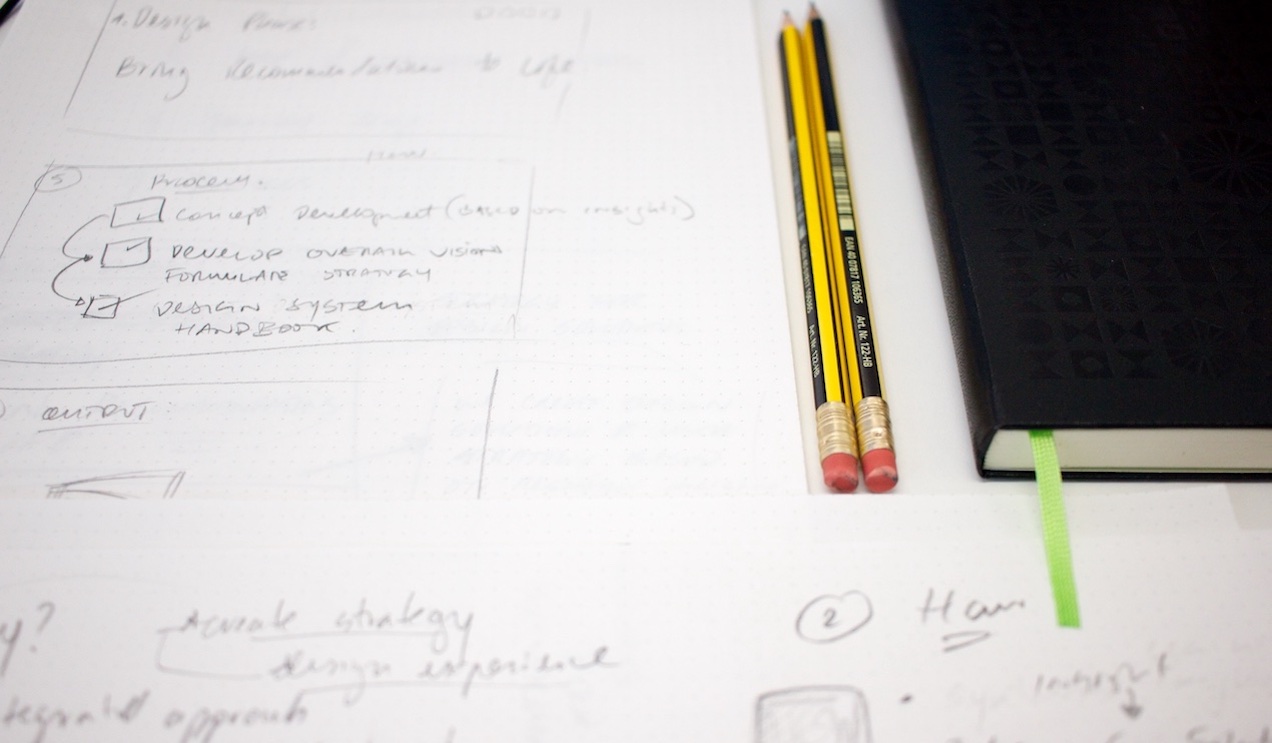What’s your mental model of a mental model?
The term ‘mental model’ crops up frequently in user research. In briefs. In debriefs. In just about every research context (save the sessions themselves). I’ve even been known to utter it myself.
But recently I’ve seen it used in so many different contexts to mean so many different things that I thought it might be time to step back and ask: what do we mean by ‘mental model’?

Broadly speaking, a mental model is how a user perceives a system to work. This definition can be loosely attributed to Don Norman, who popularized the concept in his book, ‘The Design of Everyday Things’. In the book he describes how usability issues often arise because the user’s model of how the system works differs from the designer’s model of how the system works. The closer the user’s model is to the designer’s model, the less likely they are to run into usability issues.
However, the concept seems to have moved beyond usability in recent years. In a blog post on the topic, UX researcher and trainer Nikki Anderson described mental models with reference to online shopping:
“If you develop an online shopping app, there is a good chance your users have a mental model around online shopping. They are expecting a specific sequence of events that align with their past experiences and their ideal flow.”
Nikki Anderson
Notice that we’re not just talking about how users perceive a system to work anymore but how they expect an experience to unfold, in this case online shopping. So rather than just how they perceive the shopping app to work – i.e. how to add an item to their shopping cart – it’s also, for example, whether the order in which the checkout screens are presented match their expectations, or whether the checkout process feels long-winded compared to other shopping apps they’ve used. Indeed, as it’s described here – and this is how it’s commonly used today – a mental model can be defined as the assorted expectations a user brings to an experience. To paraphrase Don Norman: the closer the experience matches the user’s expectations, the less likely they are to run into usability issues, and the more likely they are to deem it satisfying.
In many ways, this shift in meaning mirrors the way user-centered design has evolved over the years. Where previously design teams focussed on usability, now the emphasis is on immersive experiences. And for an experience to feel immersive, it first needs to follow expectations. Hence the interest in understanding what users expect.
This broader idea of mental models arguably comes from Indi Young, author of ‘Mental Models: Aligning Design Strategy with Human Behaviour’. She widened the scope to include “what a person is trying to accomplish in a larger context,” irrespective of the tools they’re using. By zooming out, she argued, we can see what people’s motivations and thought processes are, and design solutions that match them.
She developed this approach to mental models into a proprietary methodology, which she also called ‘Mental Models’. As she explains:
“Mental Models are simply affinity diagrams of behaviors made from ethnographic data gathered from audience representatives.”
Indi Young
So, a mental model is also a Mental Model, which is to say, an affinity diagram? Although I can see its merits as a research tool, her contribution to the field has arguably muddied the waters.
But ‘mental model’ has other meanings yet. In the world of information architecture, a user’s mental model is how they structure information within a given domain i.e., which topics belong together, which topics are separate. This knowledge is then used to develop an organization scheme that mirrors how they think about the domain, resulting in navigation that feels smooth and intuitive – or so it’s hoped.
All of which is to say that ‘mental model’ can mean different things depending on the context. But while it can broadly be summarized as what users expect/assume, as I’ve hopefully demonstrated, there are nuances depending on whether you’re talking about usability, information architecture or experience more generally. So next time someone mentions a mental model, ask them what they mean, or, rather, ask them what their mental model of a mental model is.
Image credits: iStockphoto & Sutherland Labs
